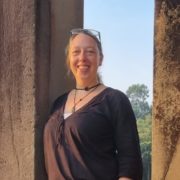Principal researcher: Dr Paula Jackson
Institute: School of Pharmacy, Nottingham University
Cost: £19,238 over 12 months
Start Date: 3rd March 2025
What are the researchers proposing to do?
ATM, a serine threonine kinase protein, is a key protein that is dysregulated in Ataxia Telangiectasia (A-T). ATM has a multitude of roles such as a protection against oxidative stress, the maintenance of telomeres and DNA repair. The lack of ATM in A-T leads to pathophysiology and currently, treatments only focus on managing disease symptoms rather than interfering with disease progression itself. Current interventional clinical trials for A-T include triheptanoin, nicotinamide riboside, N-Acetyl-L-Leucine, and intra-erythrocyte dexamethasone sodium phosphate. Previous trials have focused on the examination of oxidative stress markers to assess the efficacy of these pharmaceutical treatments, in example, nicotinamide riboside. Dr Jackson and her team are planning to override the ATM gene and directly activate kinases that the ATM gene should be activating when fully functional.
Why?
The ATM is important for recognising double stranded DNA damage and kickstarts several processes to repair this and ensure cell repair and survival. When there is a problem with the ATM gene this doesn’t happen and DNA damage can build up causing loss of cellular function in the brain. The team want to test whether they can directly kickstart these same processes using already available compounds.
How will the research be done?
Initially, cells taken from people with A-T that have the exact ATM mutation that causes A-T will be secured. These will then be tested using 5 different compounds, using cellular viability assays to identify an optimal range of doses that can be used without killing the cells. The team will then measure both metabolic activity and DNA repair in a simple assay which will indicate whether they are able to activate the DNA repair mechanisms whilst maintaining a healthy cell.
How could it make a difference in the lives of those affected by A-T?
If the team can understand how to override the ATM mis-function and this data could be used to undertake a more in-depth study of the mechanisms at play. The hope at the end is to find some alleviation to symptoms, or at best a partial treatment for people with A-T.





